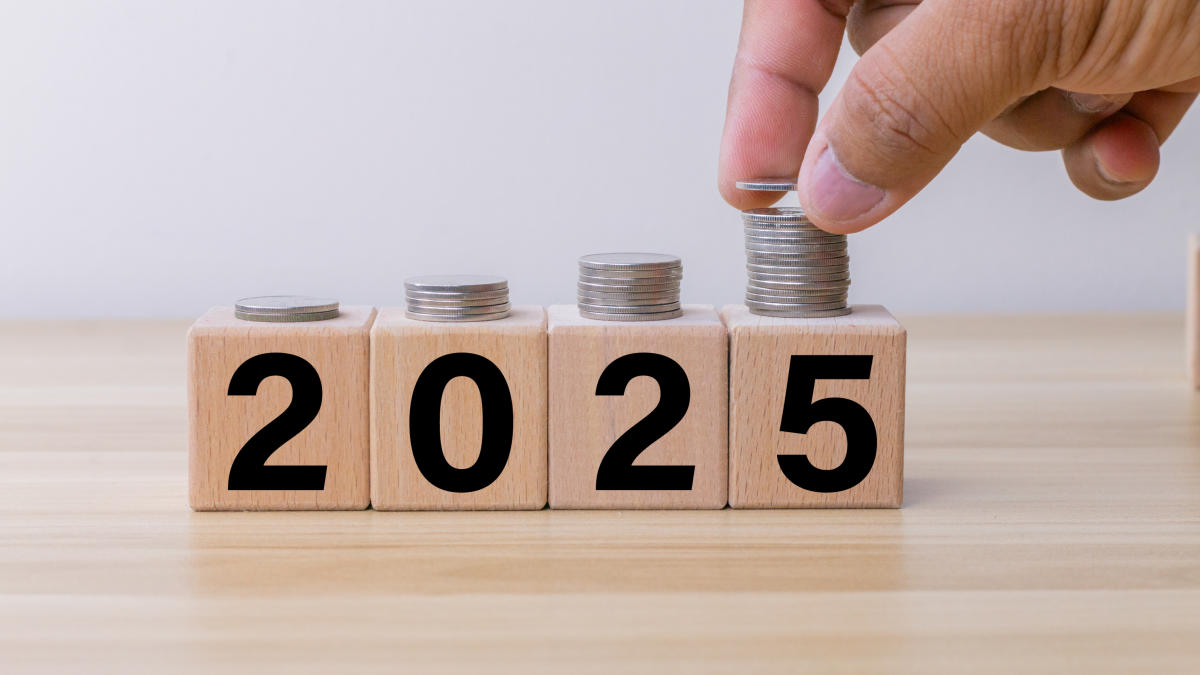- 3 Pitfalls of Holiday Layaway and Buy Now, Pay Later
- Open Lending Secures Major Auto Finance Partnership, Expands Lenders Protection™ Program
- If crypto is incorporated into Australia’s financial system, we will be lucky to avoid contagious collapse | John Quiggin
- Savings interest rates today, December 28, 2024 (best account provides 4.30% APY)
- Canada’s 1st Female Finance Minister Who Quit After Rift With Trudeau
The past year saw significant expansion in the economy: Inflation fell, as did interest rates. Unemployment rates remained low, and the S&P 500 rose by more than 20%. But with a new incoming administration, shifting financial policies, and continued recovery from the pandemic, what will 2025 hold?
You are viewing: What to expect in mortgages, investing, banking, and credit cards
See our predictions for the next year and how your personal finances may be affected.
A few months ago, many people expected mortgage rates to plummet throughout 2025. Now, as economists react to the uncertainty of how markets will respond to the Trump presidency, the outlook for rates is less optimistic. Experts at Zillow, Redfin, Fannie Mae, and the Mortgage Bankers Association predict rates will stay above 6% in 2025.
Read more: When will mortgage rates go down? A look at 2025.
Home inventory and pricing
Unfortunately, consumer demand for housing is still much higher than the supply. According to Freddie Mac, roughly 5.8 million new homes have been built in the U.S. in the last four years — but demand has risen at roughly the same rate.
“It took us about a decade to get into this housing deficit, and it’s probably going to take us about a decade to get out,” said Rob Dietz, chief economist for the National Association of Home Builders.
When there are more potential home buyers than houses for sale, the country is in a seller’s market, which tends to drive up housing prices. This is good news for existing owners who gain home equity but tough news for buyers trying to find an affordable home.
Dig deeper: 2025 housing market — is it a good time to buy a house?
This embedded content is not available in your region.
See more : Canadian foreign, finance ministers meet Trump’s team on tariffs
The year ahead promises to be interesting for investors. In the U.S., a business-friendly administration, lower interest rates, and possible corporate tax cuts may support earnings growth. But, high valuations have many investors on edge.
The S&P 500 should produce modest returns in 2025, with volatility along the way. Marta Norton, chief investment strategist at retirement plan provider Empower, expects large caps will benefit from improving macroeconomic conditions and the ongoing adoption of artificial intelligence.
Norton cites valuation as an “important countervailing force.” Valuation in this context refers to stock prices relative to earnings and other business fundamentals. When valuations are high, investors are paying more for earnings — usually with the expectation of strong growth. If the growth disappoints, volatility can result.
Small- and mid-cap stocks in 2025
Small- and mid-cap stocks may outperform the S&P 500 in 2025. The driving force will be the outsized benefits smaller companies should see from lower interest rates and possible corporate tax reductions.
According to David Rosenstrock, director at Wharton Wealth Planning, small and mid-caps are more likely to rely heavily on variable-rate debt, while larger companies favor fixed-rate facilities. Variable-rate borrowers benefit immediately from rate reductions because their obligations get repriced quickly. Existing fixed-rate debt does not adjust to lower interest rates until refinanced.
Tax cuts can favor small and mid-caps because most of their revenues are usually earned in the U.S. Rosenstrock explains, “Reducing the corporate tax rate may provide greater relief for these asset classes than for large caps, whose geographic revenue sources are more diversified.”
Read more: Stock market outlook for 2025: 4 experts weigh in
As far as banking is concerned, experts say consumers can expect changes in the new year, particularly as it relates to the federal funds rate.
“We expect the Fed will take a more gradual approach to easing next year, transitioning at first to 25 bp (basis point) cuts at every other meeting before pausing mid-year. We forecast the Fed will cut 25bp in both Q1 and Q2 of 2025, putting the fed funds target rate at 3.75% to 4.0%, and then we anticipate the Fed will pause through the end of the year,” said Sophia Kearney-Lederman, senior economist at FHN Financial.
“Our 2025 fed funds rate forecast is built on two key assumptions: inflation will rise in the middle of next year, reflecting one-off tariff pressures, and the unemployment rate will fall because of changes to immigration policy, including deportations on a smaller scale than suggested on the campaign trail. This combination of upside inflation risk and downside unemployment rate risk is what we expect will give the Fed pause in the easing process in 2025.”
See more : Streamly Snapshot: Unpacking the Impact of Automation in Finance
If the federal fund rate does fall as expected, the interest you earn on savings, money market accounts, high-yield savings accounts, and CDs could also decline.
Read more: A look at the federal funds rate over the past 50 years
This embedded content is not available in your region.
Since the Federal Reserve began lowering its target federal funds rate range earlier this year, we’ve already seen some credit card interest rates go down. In the new year, experts expect the Fed to cut rates further — but we’ll have to wait and see just how quickly they’ll do so and how low rates will go.
Related: How does the Fed affect your credit card interest rate?
At the 2024 Yahoo Finance Invest conference in November, Federal Reserve Bank of Minneapolis President Neel Kashkari said the Fed will “have to wait and see what the data says” to determine its interest rate decisions in 2025. Recently, some expert predictions say the frequency of rate cuts may slow in 2025.
If the Fed does cut rates more, you will likely see interest rates on credit cards to continue falling too. But like 2024, that doesn’t mean you’ll see a significant difference in your APR. Average credit card interest rates are still upwards of 21%. Even if the Fed’s target rate range falls by a full percentage point or more, you shouldn’t wait to get started on paying down your balances — that won’t make a significant difference in your APR, and waiting can leave you with even higher mounting debts.
Read more: What credit cardholders should know for 2025
This embedded content is not available in your region.
Source link https://finance.yahoo.com/personal-finance/banking/article/financial-forecast-what-to-expect-165315797.html
Source: https://summacumlaude.site
Category: News







